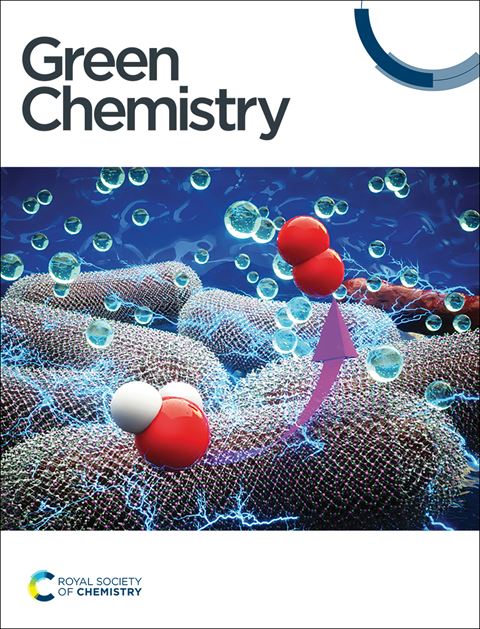Multi-layered CuO/SiO2 core–shell structure improves electrocatalytic CO2-to-n-propanol conversion†
IF 9.3
1区 化学
Q1 CHEMISTRY, MULTIDISCIPLINARY
引用次数: 0
Abstract
The electroreduction of carbon dioxide (CO2) to high-energy-density C3 products (e.g., n-propanol (n-PrOH)) is of great importance but restricted by low selectivity and activity. Herein, we developed a novel CuO/SiO2 electrocatalyst, with multi-layered CuO as the core and an SiO2 layer as the shell, for improving CO2-to-n-propanol conversion efficiency. Such a unique structure could stabilize and confine C1 and C2 intermediates, favoring their contact and carbon trimerization towards n-propanol formation. It delivered an n-propanol Faraday efficiency of 13.3% at −1.65 V with a partial current density of 94.0 mA cm−2 in a flow cell. The mechanism for electrocatalytic CO2-to-n-PrOH conversion over the CuO/SiO2 catalyst was investigated using in situ Raman spectroscopy and in situ attenuated total reflection surface-enhanced infrared absorption spectroscopy.
多层CuO/SiO2核壳结构改善了电催化co2到正丙醇的转化†
二氧化碳(CO2)电还原为高能量密度的C3产物(如正丙醇(n-PrOH))是非常重要的,但受低选择性和低活性的限制。为此,我们开发了一种新型CuO/SiO2电催化剂,以多层CuO为核心,SiO2为壳层,以提高co2到正丙醇的转化效率。这种独特的结构可以稳定和限制C1和C2中间体,有利于它们的接触和碳三聚形成正丙醇。在- 1.65 V和94.0 mA cm−2的偏电流密度下,其正丙醇法拉第效率为13.3%。采用原位拉曼光谱和原位衰减全反射表面增强红外吸收光谱研究了CuO/SiO2催化剂上电催化co2转化为n- proh的机理。
本文章由计算机程序翻译,如有差异,请以英文原文为准。
求助全文
约1分钟内获得全文
求助全文
来源期刊

Green Chemistry
化学-化学综合
CiteScore
16.10
自引率
7.10%
发文量
677
审稿时长
1.4 months
期刊介绍:
Green Chemistry is a journal that provides a unique forum for the publication of innovative research on the development of alternative green and sustainable technologies. The scope of Green Chemistry is based on the definition proposed by Anastas and Warner (Green Chemistry: Theory and Practice, P T Anastas and J C Warner, Oxford University Press, Oxford, 1998), which defines green chemistry as the utilisation of a set of principles that reduces or eliminates the use or generation of hazardous substances in the design, manufacture and application of chemical products. Green Chemistry aims to reduce the environmental impact of the chemical enterprise by developing a technology base that is inherently non-toxic to living things and the environment. The journal welcomes submissions on all aspects of research relating to this endeavor and publishes original and significant cutting-edge research that is likely to be of wide general appeal. For a work to be published, it must present a significant advance in green chemistry, including a comparison with existing methods and a demonstration of advantages over those methods.
 求助内容:
求助内容: 应助结果提醒方式:
应助结果提醒方式:


